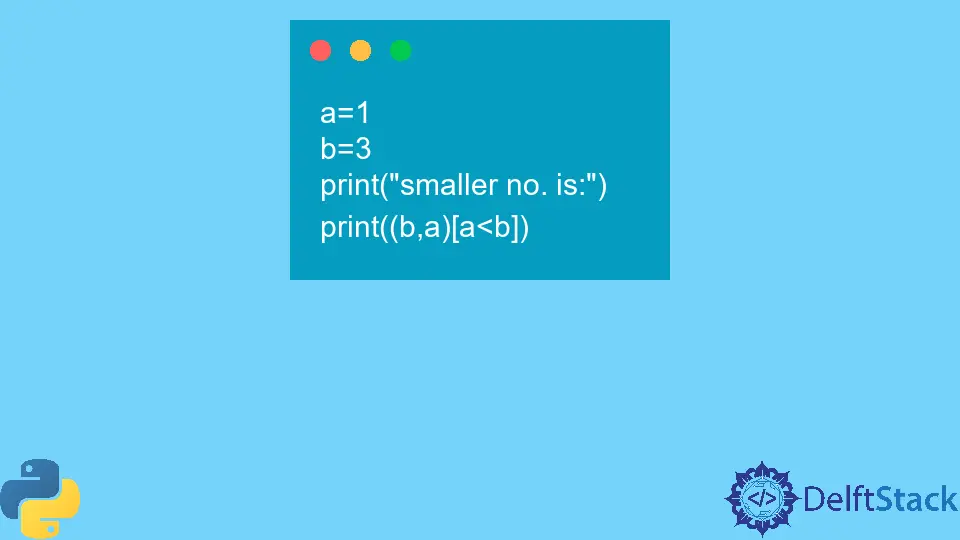if...else in One Line Python

In the world of programming, efficiency is key. Python, known for its readability and simplicity, allows developers to write concise code. One such feature is the ability to condense traditional if…else statements into a single line. This not only makes the code cleaner but also enhances its performance.
In this tutorial, we will explore how to use one-liner if…else statements in Python, demonstrating various methods with clear examples. Whether you’re a beginner looking to enhance your coding skills or an experienced developer seeking to streamline your code, this guide will provide valuable insights into mastering one-line conditional statements in Python.
Understanding One-Line if…else Statements
The traditional if…else statement in Python allows for conditional execution of code blocks based on specific criteria. However, when you want to keep your code succinct, you can use a one-liner format. The syntax for a one-line if…else statement is straightforward:
value_if_true if condition else value_if_false
This structure allows you to evaluate a condition and return one of two values based on whether the condition is true or false. It’s a powerful tool that can enhance your coding efficiency and readability.
Example 1: Basic One-Line if…else
Let’s start with a simple example. Suppose you want to check if a number is even or odd. You can achieve this with a one-liner:
number = 10
result = "Even" if number % 2 == 0 else "Odd"
print(result)
Output:
Even
In this example, we check if the variable number is divisible by 2. If it is, the result is set to “Even”; otherwise, it’s set to “Odd”. This concise format eliminates the need for multiple lines of code, making it easier to read and understand.
Example 2: Using One-Line if…else with Functions
One-line if…else statements can also be used within functions to return values based on conditions. Here’s an example that calculates the absolute value of a number:
def absolute_value(num):
return num if num >= 0 else -num
print(absolute_value(-5))
Output:
5
In this function, we return the number itself if it’s non-negative; otherwise, we return its negation. This demonstrates how you can effectively use one-liners in function definitions, enhancing both clarity and brevity.
Example 3: Nested One-Line if…else
You can also nest if…else statements within a single line. This can be useful for more complex conditions. For instance, let’s categorize a person’s age:
age = 20
category = "Child" if age < 13 else "Teenager" if age < 20 else "Adult"
print(category)
Output:
Teenager
Here, we first check if the age is less than 13. If true, the category is “Child”. If not, we check if it’s less than 20 to assign “Teenager”. If neither condition is met, it defaults to “Adult”. While nesting can make the line longer, it’s still a powerful way to handle multiple conditions succinctly.
Example 4: List Comprehensions with One-Line if…else
One-liners can also be effectively utilized in list comprehensions. Let’s create a list of squared values, but only for even numbers:
numbers = [1, 2, 3, 4, 5]
squared_evens = [x**2 if x % 2 == 0 else x for x in numbers]
print(squared_evens)
Output:
[1, 4, 3, 16, 5]
In this example, we iterate over a list of numbers, squaring only the even ones while keeping the odd numbers unchanged. This showcases how one-liners can optimize data processing in Python, making your code more elegant and efficient.
Conclusion
Mastering one-line if…else statements in Python can significantly improve your coding style and efficiency. By condensing conditional logic into single lines, you not only enhance readability but also streamline your code. Whether you’re checking simple conditions or processing data in lists, one-liners can be a powerful addition to your programming toolkit. Embracing this technique will make your code cleaner and more maintainable, ultimately leading to a more enjoyable coding experience.
FAQ
-
What is a one-line if…else statement in Python?
A one-line if…else statement allows you to write conditional logic in a single line of code, improving readability and efficiency. -
Can I use one-line if…else statements in functions?
Yes, one-line if…else statements can be used effectively within functions to return values based on conditions. -
Are nested one-line if…else statements recommended?
While nesting is possible, it can reduce readability. Use them judiciously to maintain clarity in your code. -
How does one-line if…else improve code efficiency?
By condensing multiple lines into one, you reduce the overall code length, making it easier to read and maintain. -
Can I use one-line if…else statements in list comprehensions?
Absolutely! One-line if…else statements work well in list comprehensions for concise data processing.